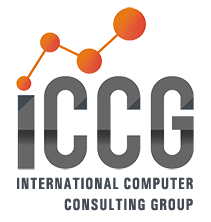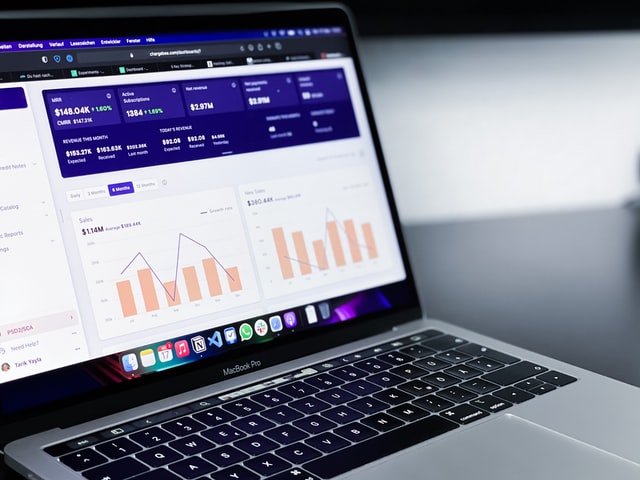For supply chain professionals in your organization to receive the flexibility and agility they need to increase speed, drive down costs, and satisfy customers, there are four critical components your company must possess. These include real-time visibility, predictive insights, prescriptive decision support, and real-time collaborative execution, all of which can be achieved through the implementation of supply chain control tower.
Deploying a network model to achieve real-time, end-to-end visibility
Visibility is the foundation of every control tower capability, with all advanced decision making and responses within the execution window relying upon the quality and timeliness of visibility. Keeping order, shipment, and inventory status updated for all parties to see in real time is critical to success., but this often proves a core challenge for control towers, since highly dynamic supply chains can change at a rate of over 50 changes per second.
Read More
Topics: ERP, Supply Chain, Supply Chain Visibility, Supply Chain Network, Fashion PLM, Infor M3 ERP, Enterprise Software, Supply Chain Operations, WMS, Supply Chain Management
Throughout the pandemic, food and beverage companies have weathered surges in demand, rapid fluctuations in consumer buying habits, and the complexities of the global supply chain. Without complete enterprise-wide visibility or collaboration, shifting gears and adapting to trends in the market can seem insurmountable.
How can you modernize to keep pace with the speed of consumer needs in today’s competitive market? We recently did a webinar with Mark Winter, CFO of My Food Bag, to hear how his company, a leading online meal kit provider in New Zealand, managed to improve business productivity, efficiently manage the growth of its business and navigate the pressures of the pandemic.
Here are some valuable takeaways from the webinar. Watch the on-demand recording if you want to hear more about how My Food Bag deals with special requests from customers for particular food products, or ingredients, how the company manages last-mile delivery, and what they do to get the right balance between supply chain efficiency and sustainability.
Read More
Topics: ERP, Food & Beverage, Supply Chain, Food Technology, CloudSuite Food & Beverage, Infor M3 ERP, Enterprise Software, WMS, Supply Chain Management
Are you reducing idle cash while reducing risks?
Today, financial services organizations are more focused on what’s necessary to safeguard business continuity and solvency. Much of this begins with greater visibility and reliability of key data to help drive your critical business decisions, especially during critical market changes.
Our current blog series is reviewing cash and treasury best practices you can follow to prepare for instant payment changes and build true cash visibility. Last week we looked at understanding the impact of instant payments. In part two this week, we focus on generating cash positioning.
Consideration #2: Generate cash positioning
To satisfy both operational and regulatory requirements, financial services organizations need operating models for cash and liquidity management. To achieve and maintain this capability successfully, organizations need to focus on gaining greater visibility into their cash and liquidity.
Download the eBook
Cash and treasury: Prepare for instant payments and build true cash visibility
Read More
Topics: ERP, Distribution, Supply Chain, Enterprise Resource Planning, Cloudsuite Fashion & Apparel, Infor M3 ERP, Infor CloudSuite PLM for Fashion, Infor CloudSuite Fashion PLM, Enterprise Software, Infor CloudSuite Fashion, Supply Chain Management, Infor CloudSuite M3, Infor CloudSuite ERP
Today, financial services organizations are more focused on what’s necessary to safeguard business continuity and solvency. Much of this begins with greater visibility and reliability of key data to help drive your critical business decisions, especially during critical market changes.
Whether you call it faster payments, immediate payments, instant payments, or fast money, real-time payments technology has gained a solid foothold in the payment processing world.
Additionally, to satisfy both operational and regulatory requirements, you need operating models for cash and liquidity management. To successfully achieve and maintain this capability organizations need to focus on gaining greater visibility into their cash and liquidity.
Download the eBook
Cash and treasury: Prepare for instant payments and build true cash visibility
We have compiled a blog series that will focus on cash and treasury best practices you can follow to prepare for significant changes with instant payments and build true cash visibility. This week, we focus on the first consideration: understanding the impact of instant payments.
Read More
Topics: ERP, Distribution, Supply Chain, Enterprise Resource Planning, Cloudsuite Fashion & Apparel, Infor M3 ERP, Infor CloudSuite PLM for Fashion, Infor CloudSuite Fashion PLM, Enterprise Software, Infor CloudSuite Fashion, Supply Chain Management, Infor CloudSuite M3, Infor CloudSuite ERP
State governments want their software to be secure, compliant and designed for the 21st century. As such, many state governments are evaluating their current ERP platforms to determine how to modernize financials, procurement, human capital management, and payroll applications.
While some have pursued modernization by embarking on multi-tenant cloud journeys, most organizations are still in the planning phase.
They are moving in the right direction, though, as multi-tenant cloud SaaS software ensures applications are continually enhanced without the need for a multi-million-dollar, multi-year project. Multi-tenant cloud software also protects limited resources from overwhelming or menial tasks such as:
- Babysitting servers
- Applying and testing an endless number of patches
- Performing backups
- Managing disaster recovery
Read More
Topics: ERP, Distribution, Supply Chain, Enterprise Resource Planning, Cloudsuite Fashion & Apparel, Infor M3 ERP, Infor CloudSuite PLM for Fashion, Infor CloudSuite Fashion PLM, Enterprise Software, Infor CloudSuite Fashion, Supply Chain Management, Infor CloudSuite M3, Infor CloudSuite ERP
The evolution of supply chain business models has been accelerated by unprecedented disruptions. As a result, there has been a clear shift from analog supply chains models of the past into a trajectory towards a digitalized ecosystem. These new business models recognize and necessitate the move to a digital and integrated supply chain that provides visibility and ease of use for consumers.
This journey is about moving towards a world where all parties participating across your network are connected to a single version of the truth. Supply chain thinking is shifting from ‘linear supply chains’ to ‘supply chain eco-systems’ propelled and supported by digital technologies.
Gartner has established a five-stage model of the journey to supply chain maturity, ranging from manual, analog systems to a fully digitalized ecosystem. Key differentiators along this evolutionary chain include consideration of data and collaboration, with the ultimate goal of integrating data across multiple systems to achieve a fully connected ecosystem that provides transparency and visibility for your company both internally and externally.
Read More
Topics: ERP, Fashion & Retail, Distribution, Supply Chain, Fashion & Apparel, Supply Chain Visibility, Supply Chain Network, Cloudsuite Fashion & Apparel, Infor CloudSuite PLM for Fashion, Infor CloudSuite Fashion PLM, Enterprise Software, Infor CloudSuite Fashion, Supply Chain Operations, Supply Chain Management, Infor CloudSuite M3, Infor CloudSuite ERP
Are you able to monitor all intraday activity for true cash visibility?
Today, financial services organizations are more focused on what’s necessary to safeguard business continuity and solvency. Much of this begins with greater visibility and reliability of key data to help drive your critical business decisions, especially during critical market changes.
Our current blog series is reviewing cash and treasury best practices you can follow to prepare for instant payments and build true cash visibility. In the previous post, we reviewed best practices for enhancing cash and liquidity forecasting. This week, we focus on ways to establish intraday liquidity monitoring capabilities.
Consideration #4: Establish intraday liquidity monitoring capabilities
Banks and financial services organizations bound by intraday liquidity regulations have an opportunity to build a stronger competitive position.
According to consulting firm Oliver Wyman: “Analysis indicates that a 25–50% reduction in intraday liquidity costs is well within reach. Further, banks will also stand to benefit from optimal efficiency, improved risk management, and timely decision-making around this scarce resource.” There are numerous financial and non-financial benefits, as well as new technological tools that simplify these complex treasury functions.
Download the eBook
Cash and treasury: Prepare for instant payments and build true cash visibility
Read More
Topics: ERP, Distribution, Supply Chain, Enterprise Resource Planning, Cloudsuite Fashion & Apparel, Infor M3 ERP, Infor CloudSuite PLM for Fashion, Infor CloudSuite Fashion PLM, Enterprise Software, Infor CloudSuite Fashion, Supply Chain Management, Infor CloudSuite M3, Infor CloudSuite ERP
A critical lesson many organizations have learned when measuring the success of analytics initiatives is that speed of deployment and widespread user adoption are key factors to consider. These are key benefits of analytic applications delivered with or embedded in ERP systems or business applications.
Analytic applications provide pre-built business intelligence (BI) and analytical capabilities that promise to democratize analytics because most of the hard work in transforming data to insights has already been done. However, the historical challenge these applications faced was that they weren’t built with agile cloud technology or modern data architectures that could keep up with the growing complexity, scale, and changing requirements of the line of business (LOB)-driven analytic requirements.
Read More
Topics: ERP, Fashion & Retail, Distribution, Supply Chain, Fashion & Apparel, Supply Chain Visibility, Supply Chain Network, Cloudsuite Fashion & Apparel, Infor CloudSuite PLM for Fashion, Infor CloudSuite Fashion PLM, Enterprise Software, Retail Supply Chain, Infor CloudSuite Fashion, Supply Chain Operations, Supply Chain Management, Infor CloudSuite M3, Infor CloudSuite ERP
Why settle for anything less?
Distributors often operate behind the scenes, making sure other businesses have what they need. The projects they support continue because tools, equipment, and supplies are where they needed to be. Patients have procedures because instruments are available. Structures are built because materials are ready. Restaurants can serve customers because food, drinks, plates, and pots are on hand.
Recent events revealed just how critical the distributor’s role is in the supply chain. In reality, it’s extremely complicated to seamlessly move such high volumes of goods. Especially as expectations and behaviors have evolved in the last decade, distributors have had to adapt their solutions, processes, and levels of service.
Historically, many distributors would customize enterprise resource planning solutions to meet their unique requirements. This approach, however, created an unwilling in-house IT cottage industry dedicated to supporting the infrastructure and modifications, instead of strategic initiatives. We see this during evaluations with prospective Infor customers; when distributors compare our CloudSuite solutions to their current footprint, we typically discover that hundreds if not thousands of their current modifications would no longer be needed. Because our solutions are designed for the distribution industry, the best practices those companies require are built in. For example, when HVAC and industrial product distributor, EMCO, moved to CloudSuite Distribution Enterprise, the company removed over 4000 modifications. EMCO no longer needed to maintain customizations and project manage long upgrade initiatives. That fluctuating, unpredictable overhead goes away forever because EMCO’s new mutli-tenant cloud solution is automatically updated monthly. Their technology is always current and always adding new distribution functionality to align with nuances and needs of this industry
Read More
Topics: ERP, Distribution, Supply Chain, Fashion & Apparel, Supply Chain Visibility, Supply Chain Network, digital disruption, Enterprise Software, Retail Supply Chain, Supply Chain Operations, Supply Chain Management, Infor CloudSuite M3, Infor CloudSuite ERP
The ability to execute, seamlessly and in real-time, is critical as your company works to develop a continuous supply chain. Being uniquely capable of connecting multiple facets of this execution -- not just to an order management system but also to TMS for transportation management and WMS for warehouse management will be key components to implementing continuous supply chain execution.
Integrated multi-party source-to-settle process
Sourcing execution or the ability to establish real-time connectivity to suppliers is key. What we are really speaking to here is the need to orchestrate end-to-end physical and financial operations between order management, global trade management, transportation, warehouse, product traceability, and even payables management.
Streamlined manufacturing
Manufacturing execution is focused on streamlining processes, driving better decision making and gaining productivity. Supply chains must optimize and automate the manufacturing process from raw materials and components to finished goods. Having the ability to anticipate and optimize lead times is crucial for downstream improvement.
Read More
Topics: ERP, Fashion & Retail, Distribution, Supply Chain, Fashion & Apparel, Supply Chain Visibility, Supply Chain Network, Cloudsuite Fashion & Apparel, Infor CloudSuite PLM for Fashion, Infor CloudSuite Fashion PLM, Enterprise Software, Retail Supply Chain, Infor CloudSuite Fashion, Supply Chain Operations, Supply Chain Management, Infor CloudSuite M3, Infor CloudSuite ERP







.jpg)



